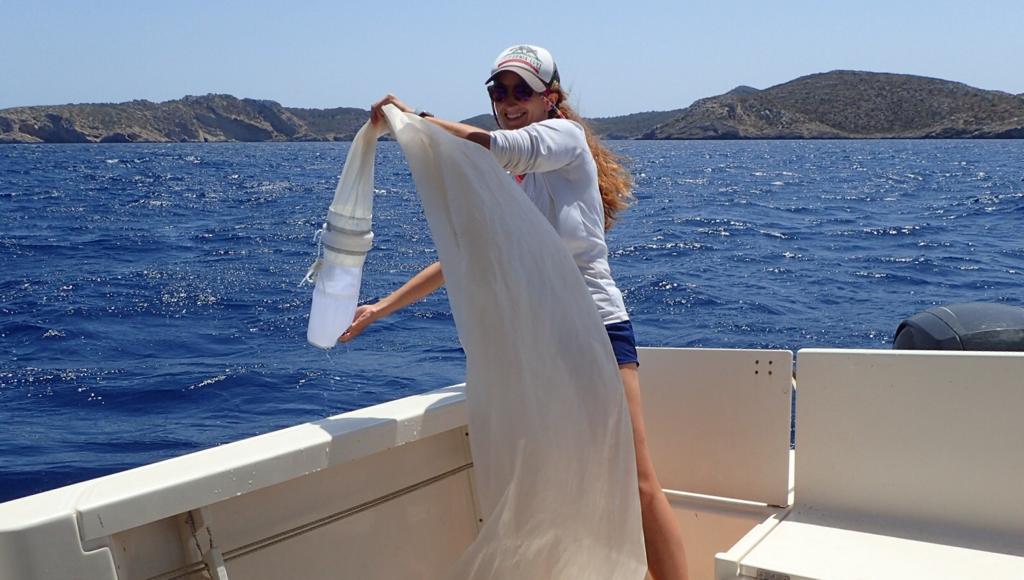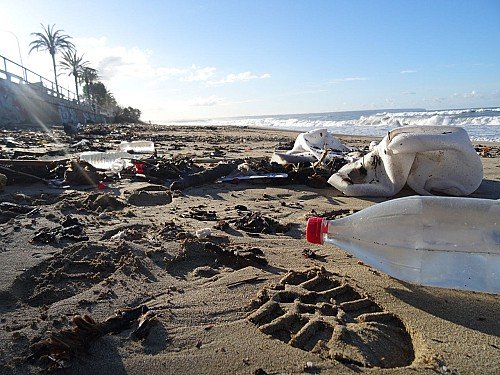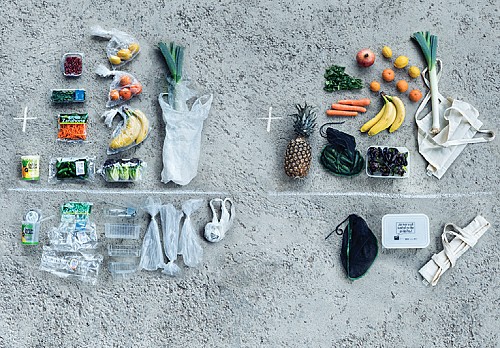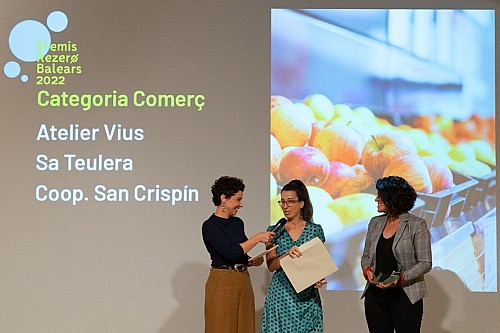Montserrat Compa has a degree in Environmental Science, and specialised in Geospatial Science at Humboldt State University (2012). She has a master’s degree in Terrestrial Ecology from the Universitat Autònoma de Barcelona (2014) and in Marine Ecology from the Universitat de les Illes Balears (2018). Under the supervision of Dr. Salud Deudero, she now combines her doctorate studies with her job as a research technician in the research group IMPACT @ SEA for the Plastic Busters MPAs project — a project funded by Interreg Med and co-funded by the European Regional Development Fund. Her main research lines include modelling the spatial and temporal distribution of marine litter, and the ingestion of microplastics by marine fauna.
What are the main issues you come across at the Oceanographic Institute on the subject of marine litter?
Our research group IMPACT@SEA (IP SaludDeudero) focuses on the analysis of the anthropogenic impacts on coastal systems. Our main lines of research are, on the one hand, the study of the ecology of coastal benthic habitats for marine conservation; and, on the other, the survey of microplastics and marine litter in biota and coastal ecosystems. We examine the spatial and temporal distribution of litter in the marine environment (on the surface of the sea, in water columns, on the sea floor and beaches) and the impacts that this marine litter distribution causes on marine fauna.
How have you collaborated on the Balearic Sea Report?
This is the second year our IMPACT@SEA research group collaborates on the Balearic Sea Report. In the first edition, we included the data we had observed in our studies on distribution of marine litter in the environment and its ingestion by marine species in the Balearic Sea. This year we have been able to examine in depth the results of several scientific studies published during the last year, thereby increasing the number of marine speciesstudied, and contributing new data on the distribution of marine litter, including the sea floor and the distribution of microplastics on the surface of the Balearic Sea.
What do you think this report means for Balearic society?
This report is very important for the general public. We cannot forget that our society has always been traditionally linked to the sea. This annual report includes all data on the latest marine and terrestrial studies drawn from a comprehensive range of sources — from scientists to public and private sectors, non-profit organisations and foundations.
What are the most important conclusions of your study on litter in the Balearic Sea?
In the last few years, our research has focused on the spatial distribution of plastics and how this impacts on marine fauna. Here are some of the results from the Balearic Islands:
- On the surface of the sea, plastic residues were found in samples with an average global abundance of 858,029 ±4,082,964 particles/km²(Compa et al., 2020). This study has identified that the coastal areas near the Balearic coastline present some of the largest areas of plastic residue accumulation in the Mediterranean Sea, because every sample collected contained plastic objects.
- On the Balearic sea floor, marine litter was detected in 88% of the samples, with an average value of 1.39 ±0.13 kg / km². Sediments from marine protected areas (MPAs) contained high concentrations of microplastics: up to 0.90 ±0,10 MP/ g (Alomar et al., 2019). A high proportion of microplastic filaments were detected near populated areas, while microplastics of the fragment type were a more common find in MPAs.
- If we examine the ingestion of microplastics in species, 45% of the species we analysed had ingested microplastics, with values that oscillated between 0 and 2.0 ±1.09 microplastics/specimen. Here are some examples: Serranus cabrilla (57%), Mana clavata (64%), Spondyliosoma cantharus (50%) (Alomar et al., 2020).
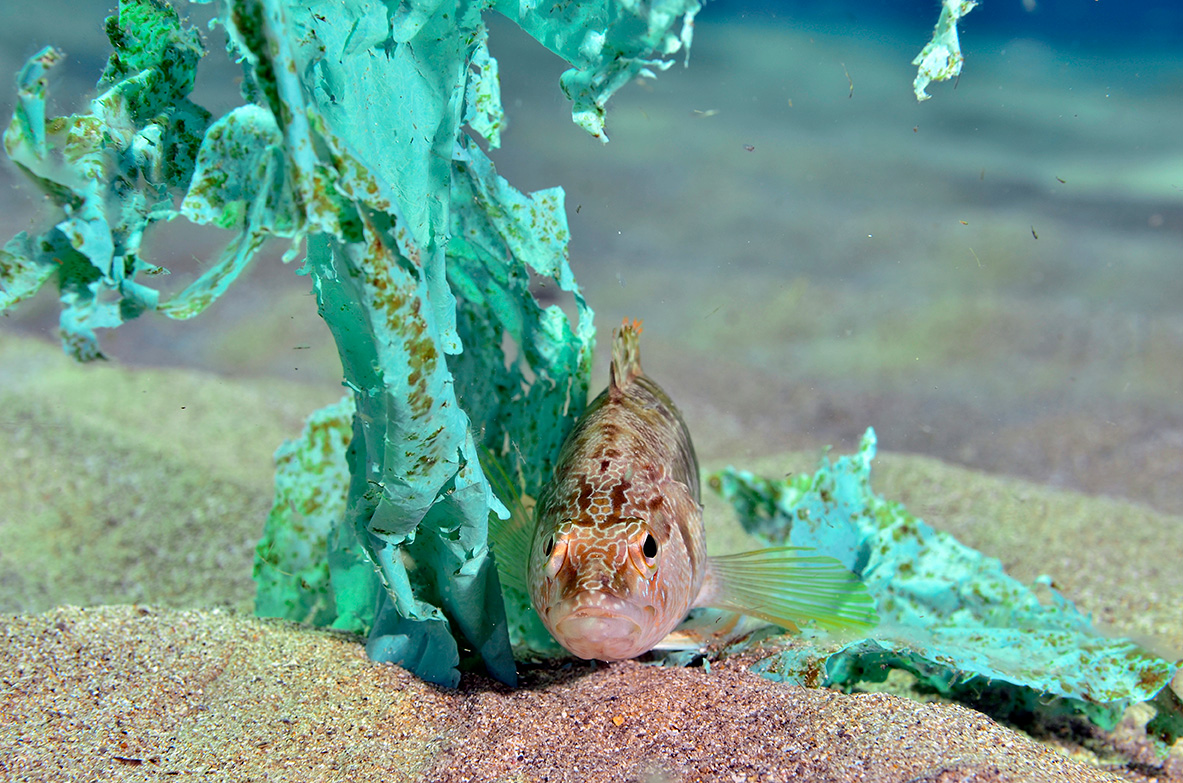
Plastics on the sea floor. Photo: Xavier Mas.
A question we ask ourselves nowadays is how the ingestion of microplastics via marine organisms can affect human beings. Do you have any interesting information in this regard?
Indeed, our most recent results suggest that the answer to this question will become ever more urgent in the next few years. As time goes by, we encounter more microplastics, especially near populated areas, and we find increasing ingestion of these microplastics across species. However, right now the consequences of the ingestion of plastics by marine organisms still forms part of an emerging line of research in its early stages of development. The first results point to negative impacts on both marine organisms and humans, originating in the plastics themselves and the additives and markers. These aspects and their implications on global health still need more research to reach conclusions.
Quick test for sea lovers:
A book: COD, by Mark Kurlansky.
An image that evokes the Balearics: The Pedra Roja cliffs.
A marine species: Mobula mobular.
A benchmark organisation or person: Simon Wood.
A beach: Alconàsser.
A sentence that defines you: "Fight for what interests you, but do it in a way that makes others want to join you ", Ruth Bader Ginsburg.
Are you an optimist, a realist or a pessimist? An optimist.
Marilles in the media
- 24/09/2024 Diario de Ibiza: "«El 100% de las muestras de agua en superficie tiene microplásticos»"
- 27/06/2022 Menorca al dia: "Más de un millón y medio de microplásticos en la playa de Son Bou"
- 04/11/2021 Fora Vila: "Aniol Esteban: “Els plàstics, la posidònia i el model de turisme són presents en el debat públic”"

